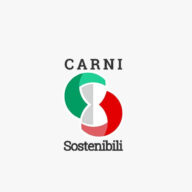
EU guidelines on the prudent use of antibiotics
In September 2015, the European Commission published a Communication relative to the Guidelines on the prudent use of antimicrobials in veterinary medicine. These guidelines, which are non-binding, are intended to define the principles for their prudent use in order to combat antibiotic resistance, indicating the measures that Member States must consider when developing and implementing national strategies. To turn the guidelines into practice, the document was accompanied by a series of practical examples of their use in the various Member States for the implementation of each ingredient.
The Commission highlights the fact that any use of antimicrobials (both in human and veterinary medicine) may result in the development of antibiotic resistance phenomena. The risk increases if antibiotics are used improperly, for example in a non-targeted (collective preventive treatments or to use non-susceptible organisms), at doses below-therapeutic, repeatedly or for inadequate periods of time.
The guidelines provide some general guidelines, and other more specific depending on the various animals. In general, the goal of a prudent administration is to reduce to a minimum the use of antimicrobials, delineating the use in cases of real necessity. In such situations, the prescription and administration of these medicines must be justified by an animal’s diagnosis by the veterinarian, and possibly supported by specific tests to determine the most appropriate choice of the antimicrobials.
Prophylaxis should not be taken in a systematic way, but must be reserved for specific indications in exceptional cases. Where possible, an individual treatment of infected animals should be preferred (for example, by administering injections) to collective or group treatments.
The narrow-spectrum antimicrobials are, in general, to be preferred to those with a broad spectrum. If an animal or group of animals suffer from recurrent infections that require antimicrobial treatment, one needs to take action to eradicate the strains of microorganisms, establishing why the disease is recurrent and changing the conditions of production, animal husbandry and/or management.
Finally, the use of antimicrobial agents that tend to favour the propagation of transmissible resistance should be avoided.
Partecipants in the chain of control
In Italy, the Ministry of Health is responsible for collecting the sales figures of veterinary medicinal products from those responsible for their commerce (AIC). The Experimental Animal Disease Prevention institutions are involved in monitoring resistance to antibiotics on farms, even offering diagnosis on diseases and zoonoses.
Zoonoses are infections or diseases that can be transmitted directly or indirectly between animals and humans, for example, through the consumption of contaminated food or contact with infected animals. In humans these diseases can have different levels of gravity, depending on the pathogen and the health condition of the infected individual, with medical cases characterised by mild symptoms to life threatening conditions.
The ASL, within their institutional competencies, constantly monitor compliance with the provisions concerning the prescription of veterinary medicinal products, place the controls provided by the relevant regional medicine surveillance plans and perform inspections of final operators to monitor the records of shipping and delivery and of the stocks.
Finally, in all the Member States of the EU the companies must compulsorily keep for at least five years – regardless of whether the animal is still in the farm or not – the records of all medicines used in animals intended for food production, including the treatments with antibiotics. The records are used to verify the use of antimicrobials in the farm, to observe trends and analyse changes.
The Sustainable Meat Project





